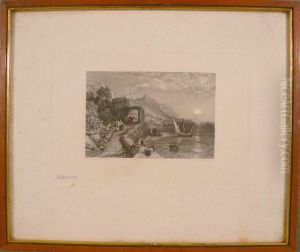James Baylie Allen Paintings
James Baylie Allen was an English artist born in 1803, whose work primarily consisted of watercolor paintings and engravings. Although not as widely recognized as some of his contemporaries, Allen's contributions to the art world during the 19th century were notable for their detailed depictions of landscapes and urban scenes.
Allen spent a significant portion of his career in London, where he was actively involved in the city's vibrant art scene. He exhibited his works at various prestigious venues, including the Royal Academy and the Society of British Artists, which helped him to establish a modest but dedicated following. His engravings, often based on his own paintings or the works of others, were particularly appreciated for their intricacy and accuracy, contributing to the popularization of landscapes as a subject matter among the English middle class.
Despite the lack of extensive records about his personal life, it is known that Allen was part of a network of artists and intellectuals that included both well-known and emerging figures of the time. This environment stimulated his artistic development and allowed him to refine his technique in both watercolor and engraving. Over the years, Allen's style evolved, reflecting the broader changes occurring in British art, especially the growing interest in naturalism and the depiction of everyday life.
Allen passed away in 1876, leaving behind a body of work that, while not revolutionary, played a role in the development of 19th-century British art, especially in the realms of watercolor painting and engraving. His dedication to capturing the beauty of the English landscape and urban milieu has ensured that his works continue to be appreciated by art historians and collectors alike.
